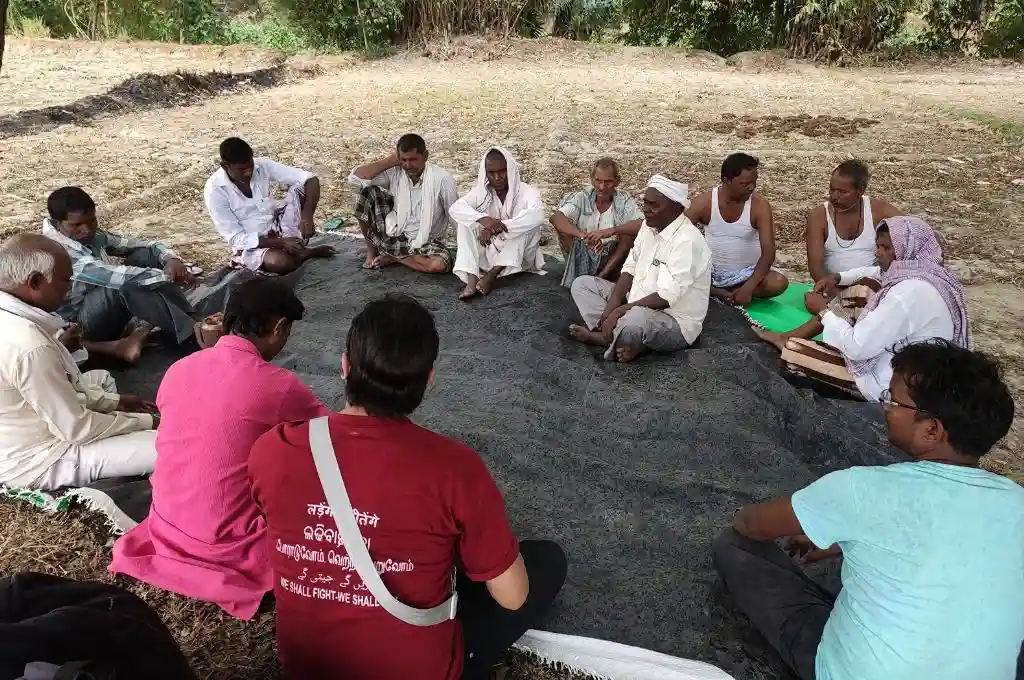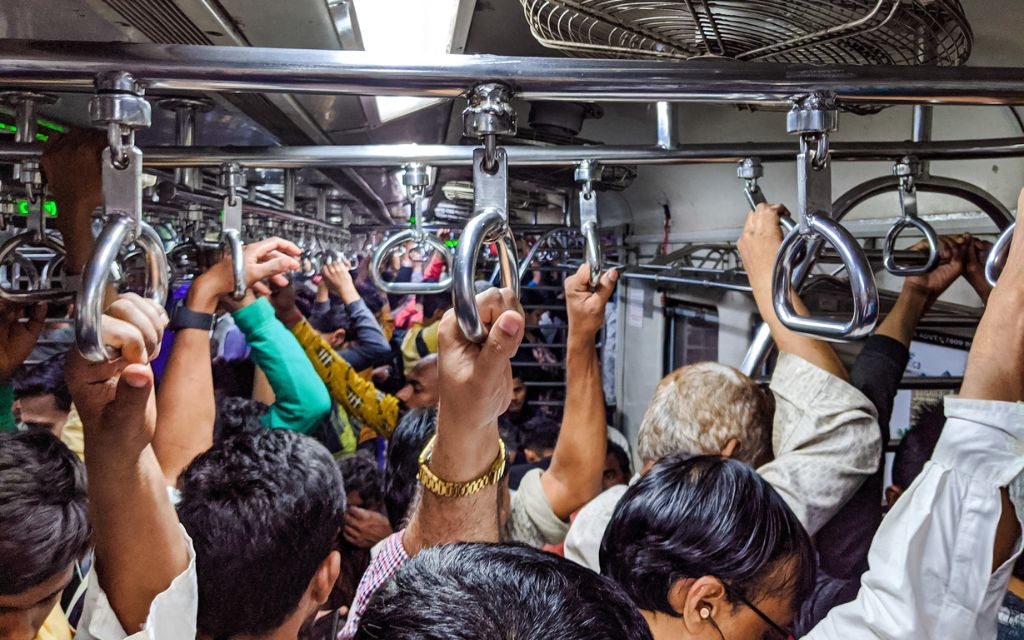Thousands of small-to-mid-sized grassroots organisations work on social issues in the country. Here, grassroots organisations, or jan sangathans, refer to institutions that engage directly with communities on the ground. These are different from nonprofit organisations.
Unlike traditional nonprofits, jan sangathans lack a formal structure. They often do not have a fixed system of monthly income for their workers. Fundamentally, they operate on the principle of working on issues through the community that is most affected by those issues. The challenge they face as a result is in continuing their grassroots efforts while meeting the day-to-day needs of their employees. Here’s how sangathan’s can effectively use their funds and become economically self-reliant, while keeping the community at the centre.

1. Sangathan is the need of the community, not just of an individual
Suresh Rathod, head of the MGNREGA Mazdoor Union in Banaras, explains that ensuring public participation in social work is essential. He says, “We attempt to raise money for social work directly from the public.” Elaborating on this, Ulka Mahajan, leader of the Sarvahara Jan Andolan in Maharashtra’s Raigad district, says, “We must ensure that if we are forming a sangathan, it meets the needs of the community and not just of an individual or of a few workers. In the early days of the organisation, we decided that we would not seek funding for any programme; the organisation’s financial needs would be met through membership fees and personal contributions.”
She further adds, “Initially, we’d have to inform people that we need financial support for the organisation’s work. Over time people understood the requirement, and now they voluntarily pay the membership fee and donate for events.”
Jerome Kujur, head of the Kendriya Jan Sangharsh Samiti in Jharkhand’s Latehar district that works for Adivasi rights and against the Netarhat field firing range, explains, “We try to keep the programme costs as minimal as possible, so ensuring community participation is important. We accept any form of support we can get.” He adds, “People used to bring their own ration for the programmes organised during the Field Firing Range movement. These programmes ran for an entire week at a time, and people not only cooked their food together but would also arrange their own transportation.”
2. Capacity building for the community is key
A sangathan is considered large when people participate in high numbers. However, economic support from the members, who often come from marginalised communities, remains limited to INR 10–50 in the form of annual membership fees or donations. Therefore, it is necessary to build capacity within the community to strengthen the organisation. A close relationship with the community can help identify skills that otherwise require external monetary resources. For example, members of the sangathan can be trained in GPS mapping, preparing visual maps of villages, filling out forest rights claim forms, and so on.
Organisations can conduct capacity-building workshops in youth camps or organise informative sessions.
Ulka shares an example, “We often have to take the legal route in cases related to land rights. We prepare community members to participate in court proceedings to reduce legal expenses. This also builds their confidence and strengthens the organisation’s relationship with the community.”
3. Building necessary values among the community goes a long way
People will understand the difference between attending a political party meeting and an organisational programme if the organisation works on values such as equality, justice, and social harmony among the community. Ulka says, “We have an ongoing dialogue with the community members to explain that the sangathan’s programmes are for their rights, and so they have to participate in managing those programmes. We emphasise that everyone must contribute to the process of forming and running the sangathan.”
She adds, “People who understand the work of the sangathan contribute the funds that they would have used for hosting celebrations for occasions such as birthdays and other joyful events. Some people even contribute in memory of a deceased relative or loved one. This is only possible because of their understanding of the issues at hand.”
Jerome shares, “To gather financial support for the Field Firing Range movement, we considered families living in the affected regions as a single unit. This included both Adivasi and non-Adivasi families. We also sought support from people who had migrated to other states. We encouraged them by highlighting that since they couldn’t participate in the movement directly, they could contribute financially. Their families also encouraged them to support us financially.”
Focusing on the collective power of the people, Ulka notes, “We had decided that we wouldn’t give special treatment to anyone; we would increase our strength through mutual cooperation.”
4. Determining the community’s role in financial decisions is important
Active community participation in the organisation’s work fosters a relationship of mutual trust; this is essential for garnering financial support. Jerome explains, “The money collected from memberships and donations is distributed among the village committee, regional committee, and central committee. These committees play a key role in planning programmes at their respective levels, and are made up of people from the community. In this way, we ensure people’s participation in our programmes.”
In the discussions with all three sangathans, it emerged that they hold scheduled meetings (annually, half-yearly, and quarterly) where they present details about the money collected and how it was spent. They also discuss plans for upcoming programmes, allowing community members to share their suggestions. This ensures transparency in the organisation’s work and accountability for the financial support received from the community.
5. Connecting jan sangathans with the civil society network can help
Ulka explains that while financial support for programmes is raised from the community, stipends for workers are sometimes contributed by local institutions. For instance, in Maharashtra, they receive assistance from a group called Samajik Kritagyata Nidhi (or social gratitude fund), which includes people from creative fields such as literature, art, writing, and film who support individuals committed to social change. Similarly, some workers receive fellowships from the Delhi-based nonprofit SRUTI.
Such groups and institutions provide platforms for organisations to build networks and relationships. With the help of technology, jan sangathans are now able to connect on a larger scale, forming alliances and networks that span multiple states. These networks are valuable sources of knowledge derived from experiences on the ground, providing critical insights for running organisations successfully They also connect like-minded individuals and organisations and open avenues for financial support.
Another benefit of such networks is that members of one sangathan get the opportunity to interact with or visit other similar sangathans in different regions. Jerome shares that through such a network, members of his sangathan were able to visit a group in Jammu and Kashmir that was protesting against the Tosa maidan field firing range. The host organisation in Kashmir covered their accommodation, food, and local travel expenses, enabling them to learn from their work at minimal cost.
Current challenges
The number of nonprofits working on social issues has grown rapidly in the last few decades. Problems that people previously approached sangathans for, such as obtaining identity documents or ration cards, are now handled by nonprofits that are better funded. This has made it increasingly challenging for sangathans to maintain their connection with the people.
Suresh says, “Due to these changing circumstances, many sangathans are becoming dependent on institutional support, which is concerning. Nonprofits typically work on a project basis and operate with fixed goals and timelines. Once the project ends, financial support from them also stops, increasing the likelihood of dependent sangathans shutting down. An added challenge in recent years is the divisive ideologies being promoted in the country, which makes it difficult to organise and bring communities together.”
Ulka also considers the growing influence of nonprofits a significant challenge. She explains, “These institutions have financial resources, but their project-based approach fosters a mindset of measuring change through quantifiable results. As a consequence, maintaining continuous efforts for systemic transformation becomes difficult. Additionally, young people from marginalised communities, who join sangathans with the desire to work for their community, are often recruited by nonprofits that offer better pay. This attracts many youths to nonprofits as they can fulfil their financial needs, even though they are more ideologically aligned with the objectives of a sangathan.”
Despite these challenges, organisations such as the Sarvahara Jan Andolan, MGNREGA Mazdoor Union, and Kendriya Jan Sangharsh Samiti continue to raise their voice for the rights of marginalised communities. They adapt to changing circumstances, which is key to their success. Ulka says, “Students of social work and researchers visit to understand the sangathan’s work, and voluntarily make financial contributions. Such efforts offer young people exposure to social work and lay the foundation for new partnerships. However, the most important aspect is to maintain a relationship with the community. If people understand the need for a sangathan, they will naturally strive to sustain it.”
—
Know more
- Learn why grassroot organisations are not able to scale easily.
- Read why grassroot organisations are essential for sustainability.
- Read this guide on how to fundraise at the grassroots.




